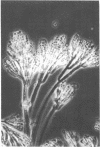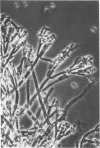Abstract
Fifty-two isolates of Penicillium viridicatum Westling were divided into three groups based on ability to produce ochratoxin and/or citrinin, color, growth rate, type of growth, odor, and isolation source. Members of group I resemble one of the representative strains of P. viridicatum described in the literature; those belonging to group II differ from group I strains in several characteristics; group III is a heterogeneous series of highly variable isolates. Although three subgroupings can be recognized, retention of all isolates in the species P. viridicatum is deemed most appropriate at this time. Spore macerates of all isolates were examined for virus-like particles but none were detected.
Full text
PDF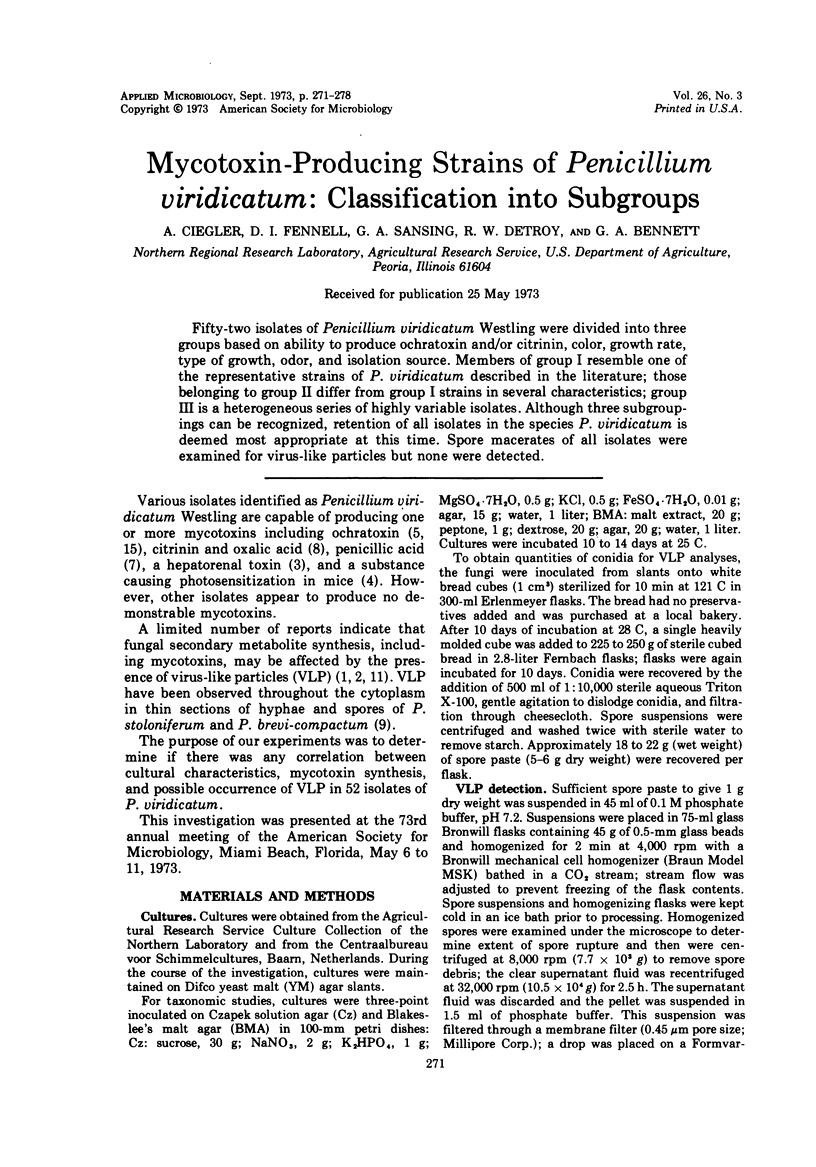
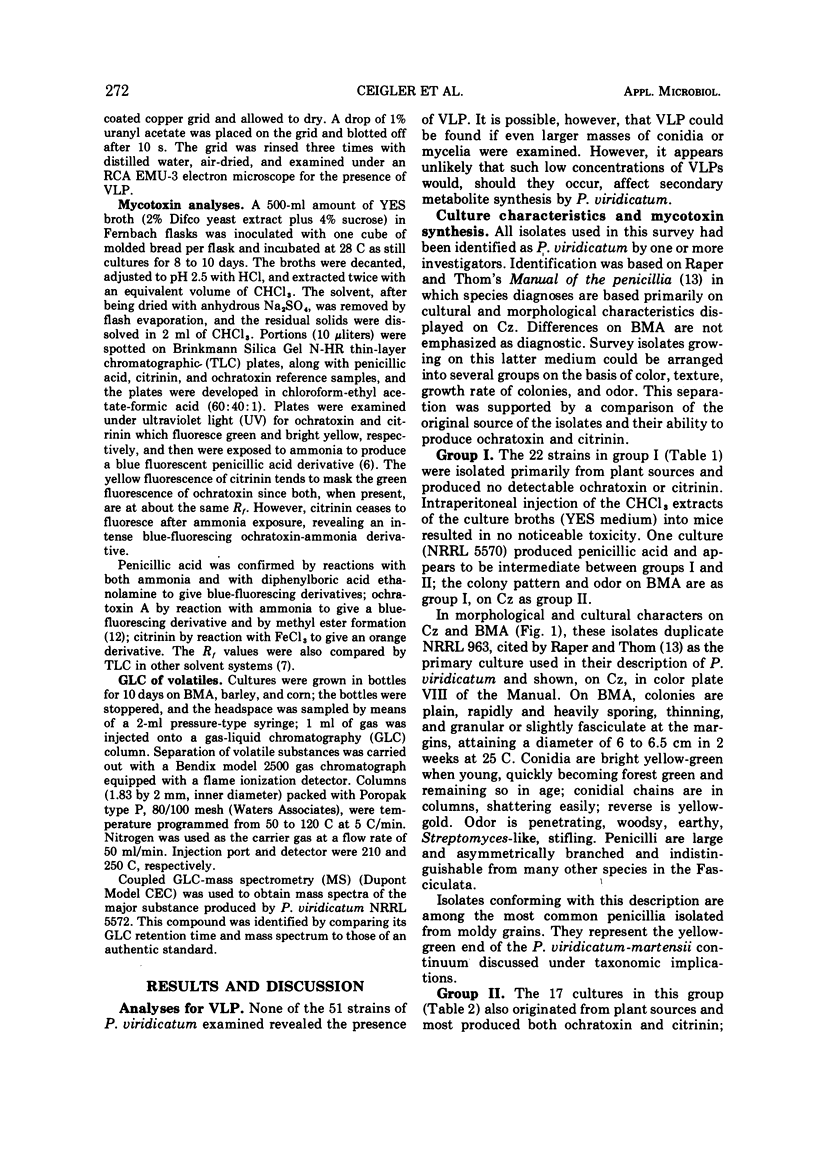
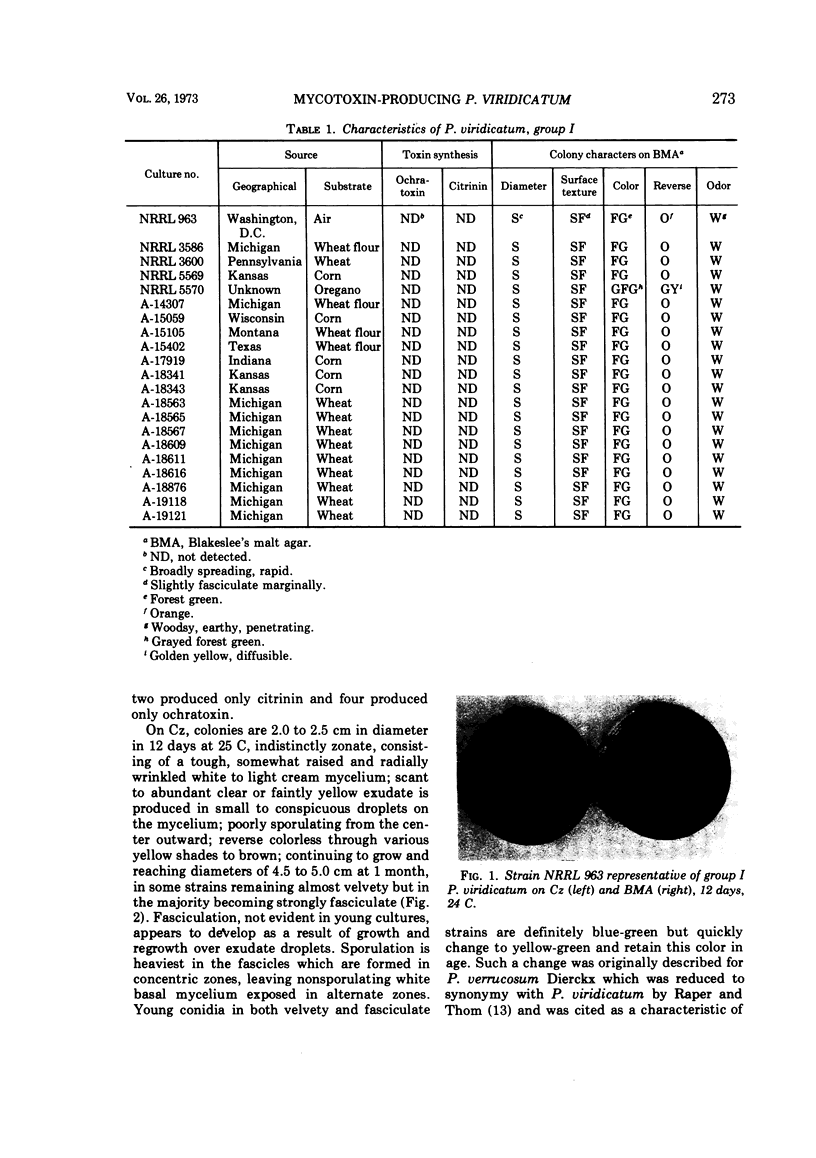
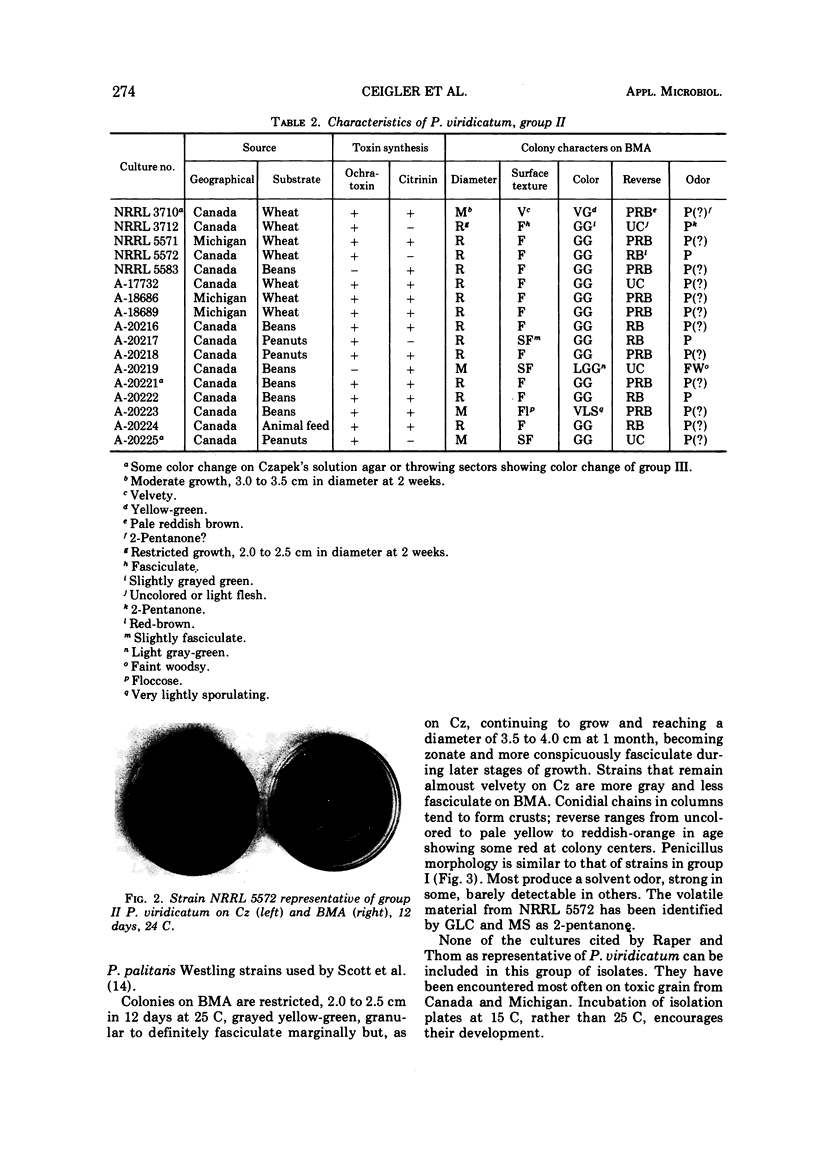
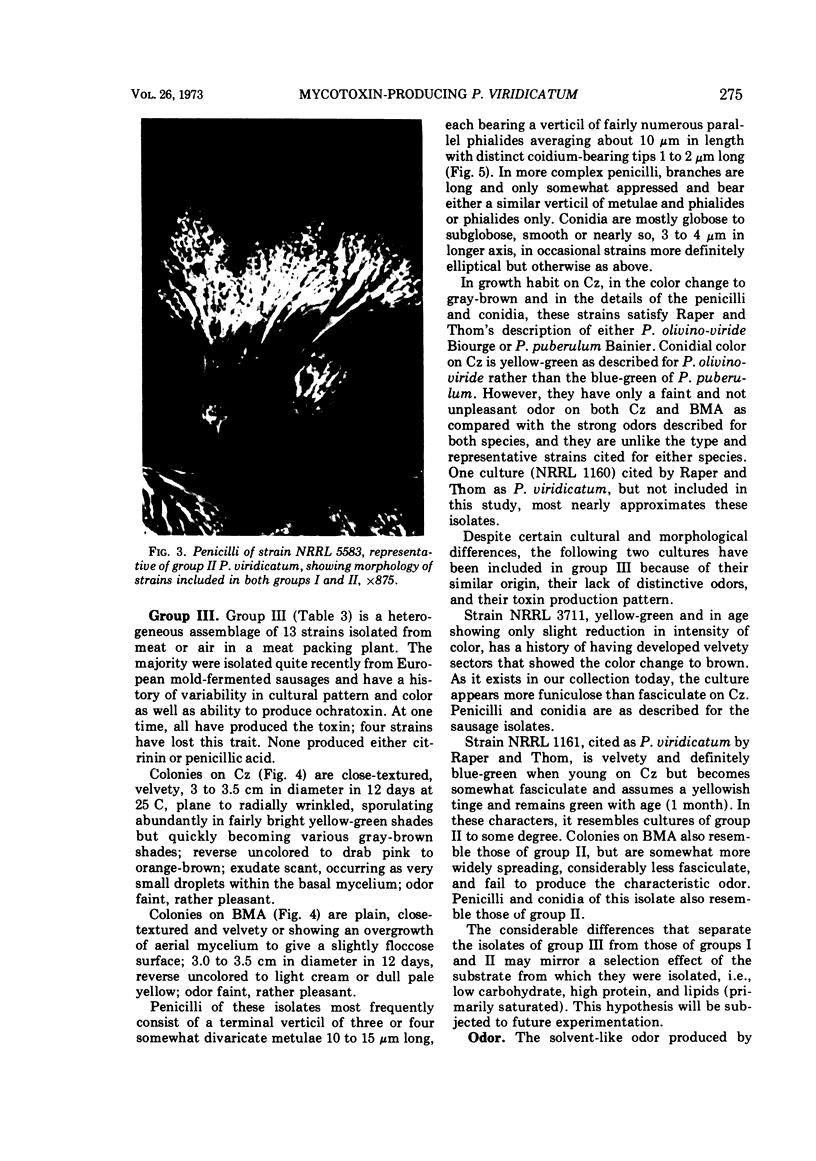
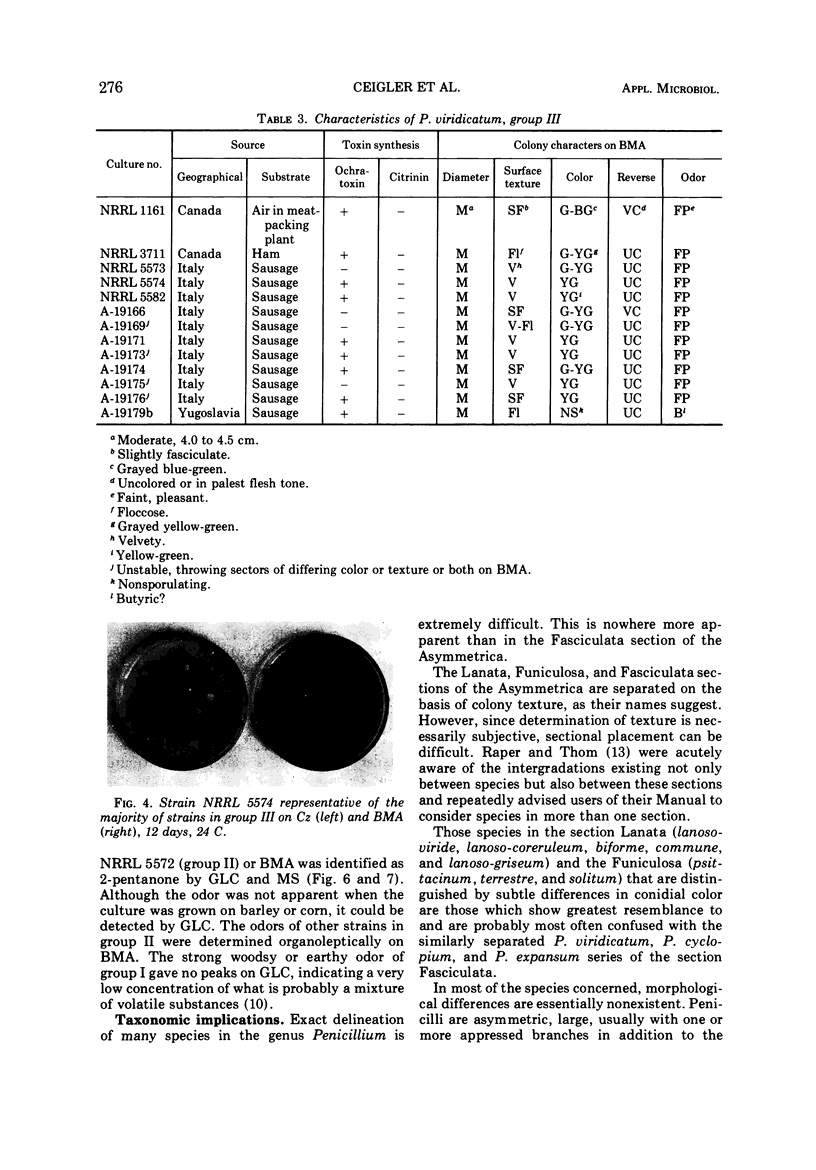
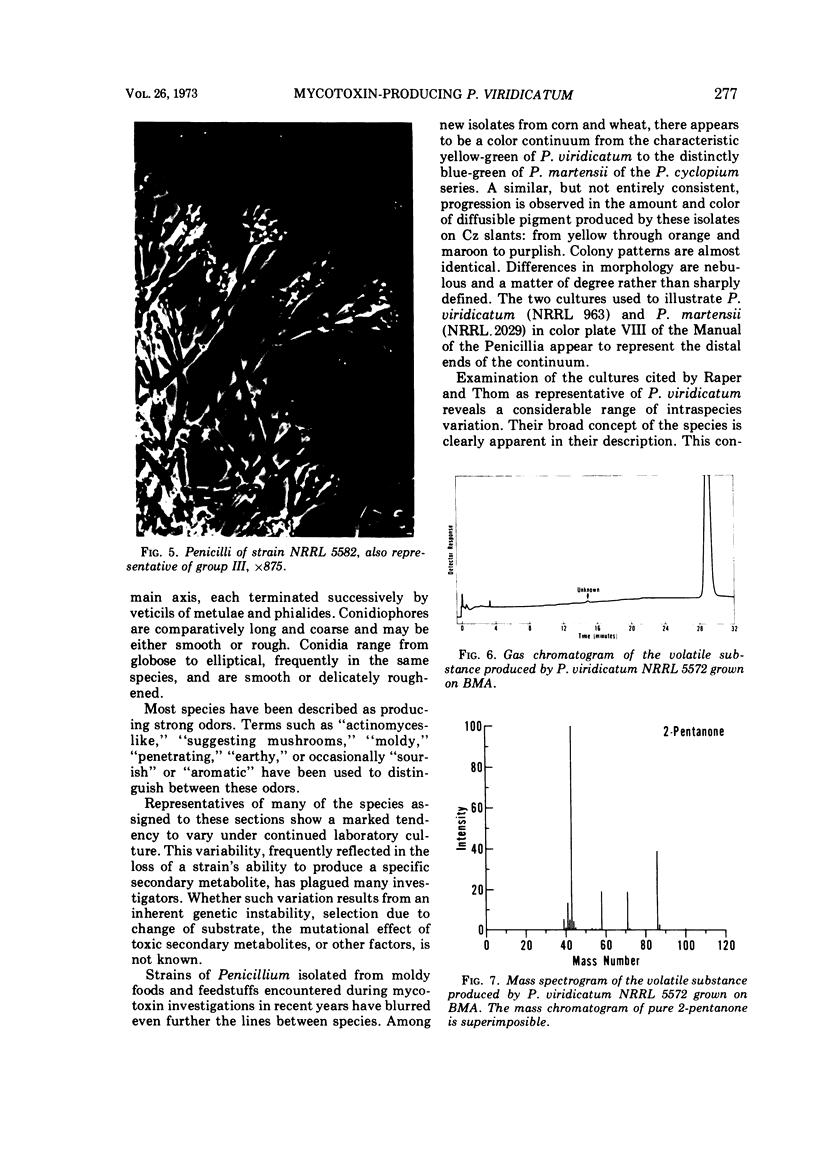
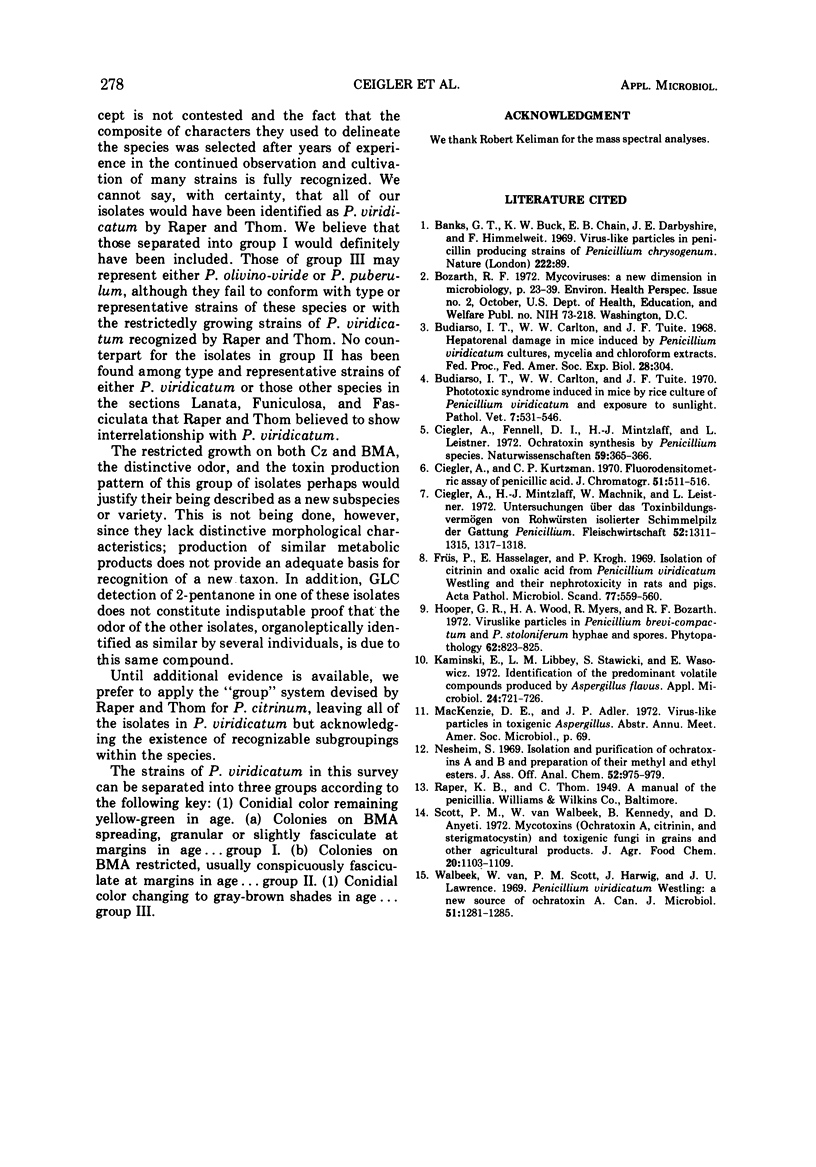
Images in this article
Selected References
These references are in PubMed. This may not be the complete list of references from this article.
- Banks G. T., Buck K. W., Chain E. B., Darbyshire J. E., Himmelweit F. Virus-like particles in penicillin producing strains of Penicillium chrysogenum. Nature. 1969 Apr 5;222(5188):89–90. doi: 10.1038/222089b0. [DOI] [PubMed] [Google Scholar]
- Bozarth R. F. Mycoviruses: a new dimension in microbiology. Environ Health Perspect. 1972 Oct;2:23–39. doi: 10.1289/ehp.720223. [DOI] [PMC free article] [PubMed] [Google Scholar]
- Budiarso I. T., Carlton W. W., Tuite J. F. Phototoxic syndrome induced in mice by rice cultures of Penicillium viridicatum and exposure to sunlight. Pathol Vet. 1970;7(6):531–546. doi: 10.1177/030098587000700608. [DOI] [PubMed] [Google Scholar]
- Ciegler A., Fennell D. J., Mintzlaff H. J., Leistner L. Ochratoxin synthesis by Penicillium species. Naturwissenschaften. 1972 Aug;59(8):365–366. doi: 10.1007/BF00617916. [DOI] [PubMed] [Google Scholar]
- Ciegler A., Kurtzman C. P. Fluorodensitometric assay of penicillic acid. J Chromatogr. 1970 Sep 23;51(3):511–516. doi: 10.1016/s0021-9673(01)96898-0. [DOI] [PubMed] [Google Scholar]
- Friis P., Hasselager E., Krogh P. Isolation of citrinin and oxalic acid from Penicillium viridicatum Westling and their nephrotoxicity in rats and pigs. Acta Pathol Microbiol Scand. 1969;77(3):559–560. doi: 10.1111/j.1699-0463.1969.tb04263.x. [DOI] [PubMed] [Google Scholar]
- Kamiński E., Libbey L. M., Stawicki S., Wasowicz E. Identification of the predominant volatile compounds produced by Aspergillus flavus. Appl Microbiol. 1972 Nov;24(5):721–726. doi: 10.1128/am.24.5.721-726.1972. [DOI] [PMC free article] [PubMed] [Google Scholar]
- Scott P. M., Van Walbeek W., Kennedy B., Anyeti D. Mycotoxins (ochratoxin A, citrinin, and sterigmatocystin) and toxigenic fungi in grains and other agricultural products. J Agric Food Chem. 1972 Nov-Dec;20(6):1103–1109. doi: 10.1021/jf60184a010. [DOI] [PubMed] [Google Scholar]
- van Walbeek W., Scott P. M., Harwig J., Lawrence J. W. Penicillium viridicatum Westling: a new source of ochratoxin A. Can J Microbiol. 1969 Nov;15(11):1281–1285. doi: 10.1139/m69-232. [DOI] [PubMed] [Google Scholar]





